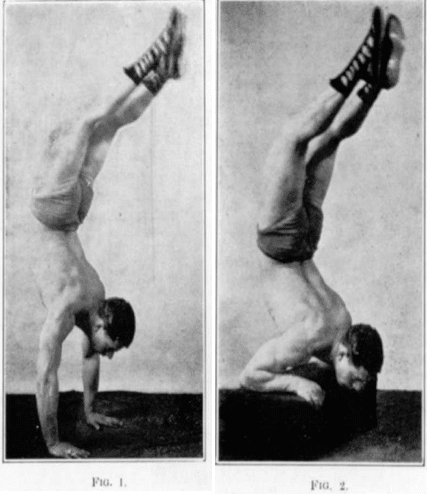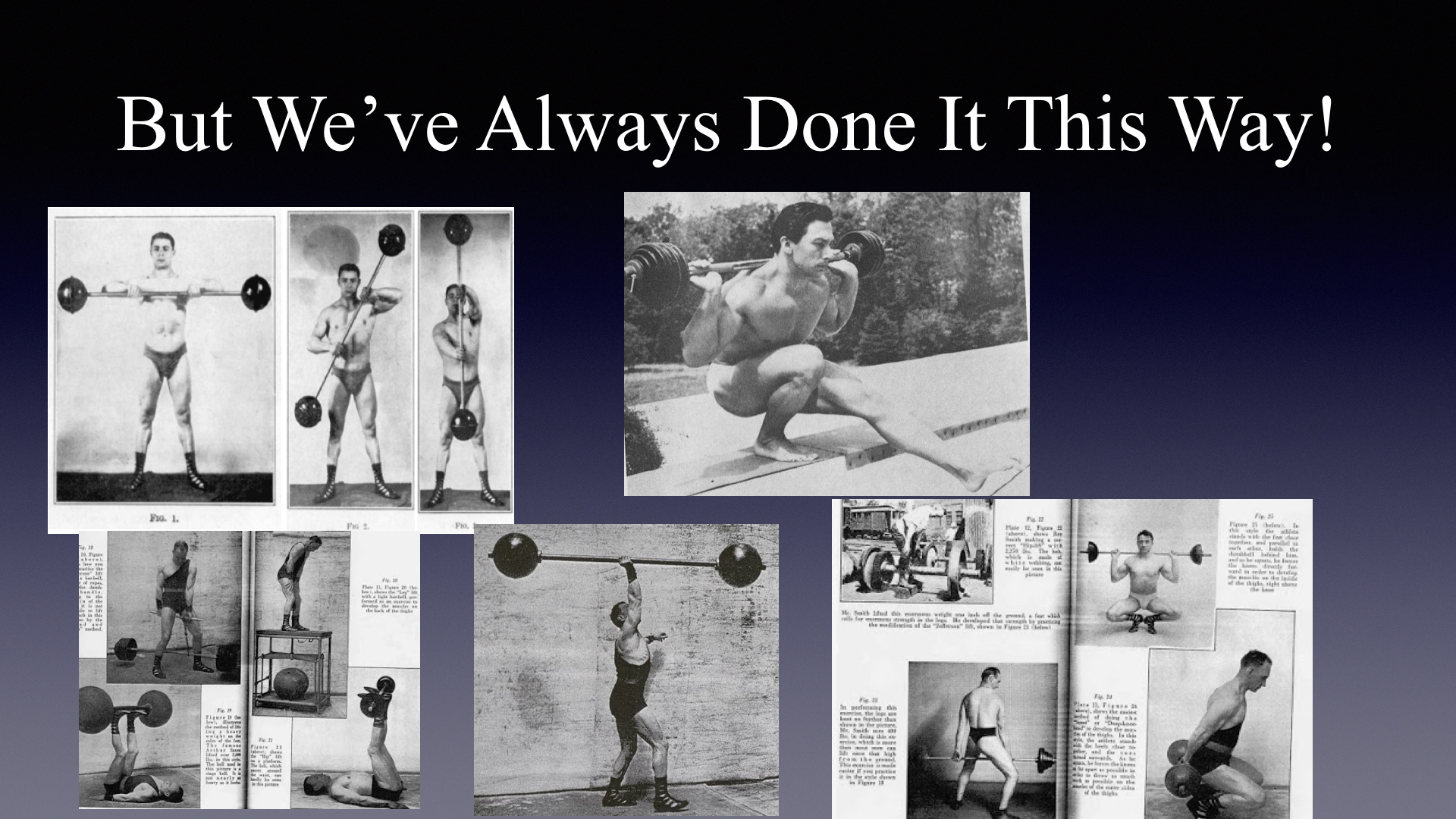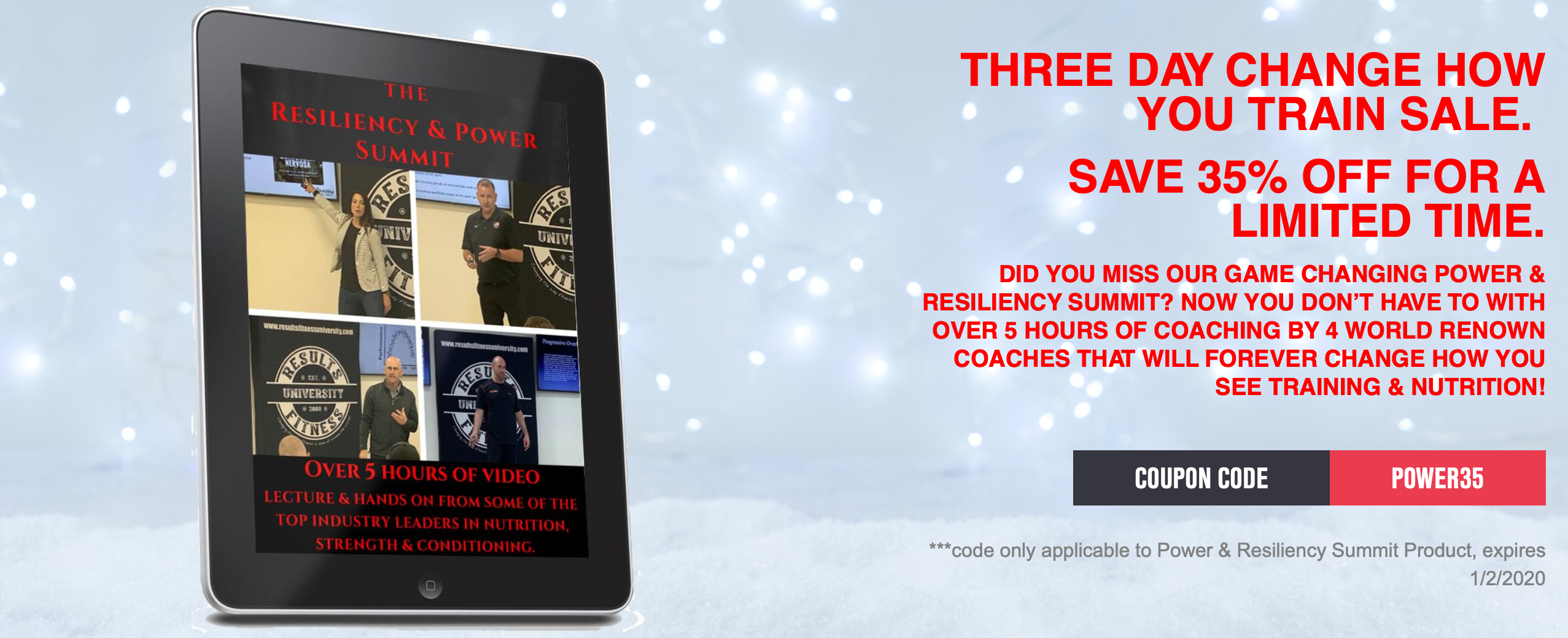Why Does Our Strength Training Needs To Evolve
2019-12-30
I’ll be the first to admit it, I can be kinda geeky about fitness at times. No, not like compulsive about my diet or #nevermissingaworkout , but rather wanting to understand the science of training and the history. That is because a lot of the debating around what is right and wrong has a lot to do with context and knowing where ideas come from. Often times we get so caught up about defending our ideas about strength training that we fail to realize where the ideas originated and the intent behind them.
That is why when we offer different ideas about strength training they are often met with very opposing reactions. Some absolutely love the science and thoughtfulness we put behind our DVRT ideas (if you are reading this, hopefully that is you!), while others will put out some inventive name calling because it is quite evident they want nothing to do about re-thinking their strength training.
I’d love to tell you that my desire to think differently about strength training is because I am some amazing intellectual. I WISH that was the case, but the truth is that I HAD to about strength training differently. Since I was 14 I’ve had severe spine issues. When I was a teenager they were already discussing surgical options to my spine. Strength was the way I was able to put off surgery and do “normal” things, even being a competitive athlete at a decently high level.

Not sure if doing Strongman was the BEST thing for me, but even then I didn’t know the extent of my spine issues!
Yet, even from 14 to 24, things were getting bad in my body and I searched for strength to continue to be the answer. Let’s say that some things were really smart and others were really dumb of me! One thing I noticed is that I couldn’t train like everyone else and I had to find different solutions for my goals that wasn’t so obvious or a popular way to think.
That is what made me dive into what HAS been done because why re-invent the wheel? I especially fell in love what old time strongman athletes. These were performers of the late 1800’s and early 1900’s. Why? They had the balance of strength that I think many of us would love to possess. There was the control of gymnastics types of movements along with the weight training strength that would impress many of today’s gyms. The challenge was to think about how to connect the dots because it wasn’t like there was a uniformed system of training then either.

The result is what you see with DVRT and even after 15 years we are still evolving, largely because I get to interact with so many fantastic coaches. One that has been a big supporter from the beginning is Alwyn Cosgrove. Especially this past year, Alwyn and I have texted quite a bit thinking, debating, and brain storming what “strength” really means. Part of this discussion is definitely due to Alwyn’s great work in Obstacle Course Racing (OCR) where Alwyn even consults with the Olympic program.

Why has OCR made Alwyn think a bit differently about strength training? Even if you have no interest in OCR, I think you will find yourself nodding to many of the same ideas that Alwyn discusses…
Without really talking about and having different avenues in which we got there, we both realized that many strength training approaches weren’t really addressing what the real world needed. That strength and movement in life and most sports was far more complex than anything we were seeing or doing in the gym. Alwyn and I both see ourselves as problem solvers, so if that is the case, how do we start to re-evaluate what strength training needs and how it is done?
Before I get into it, for those that want to tell me, “Josh, why change, it has ALWAYS been done this way before!” My first question is typically, “what way?” Fitness really didn’t become popular till almost around the 1950’s. For most of mankind fitness wasn’t needed because life was mostly manual labor. Military groups were the only one’s in society that really followed much of a fitness program, that was for obvious reasons.

Strength training has come in many forms, several of which would look very strange in today’s gyms!
The idea of a strength coach or personal trainer was pretty foreign for a long time. Athletes long believed strength training would hamper their performance. The first strength coaches were typically the biggest or strongest people in the gym. This would either be a bodybuilder, powerlifter, or Olympic lifter, I have zero problem with any of these sports, but it does raise the question why a basketball player would train like any of them?
You can imagine, they would teach athletes to lift the way they lifted. The governing body for strength coaches, the National Strength & Conditioning Association was formed in 1979 while most fitness associations were in the 80’s. My point? Things haven’t been “done” that long and the way we chose to do them wasn’t based on a heck of a lot of science.
Does this mean we don’t squat, we don’t deadlift, we don’t do pull-ups. Of course not! As Alwyn says so well in the clip, if we don’t have ownership of the pieces of a movement we can’t do more complex movements. We do those, we just don’t do JUST those. I hope you will get some ideas from my clip below. My goal with our Power & Resiliency Summit was to get amazing coaches together to really help make a positive impact on our industry. Part of that begins with us willing to ask the right questions and never being satisfied with what we come up. However, these ideas I think are at least pointing us in a great direction!
Our hope is that education is the most powerful gift we can offer. Knowing why along with how empowers us to make incredible differences in ourselves and others. That is why we are offering the video download series of our Power & Resiliency Summit for 35% off for a limited time. For 2 more days you can get over 5 hours of amazing information and how to’s from pretty incredible teachers. Use code “power35” HERE now!
© 2025 Ultimate Sandbag Training. Site by Jennifer Web Design.







